Fish preparation applies to the “caciucco fish stew” recipe, featured in the seafood section of the website
These are general guidelines about how to prepare the different varieties of fish before cooking the fish stew.
SQUID
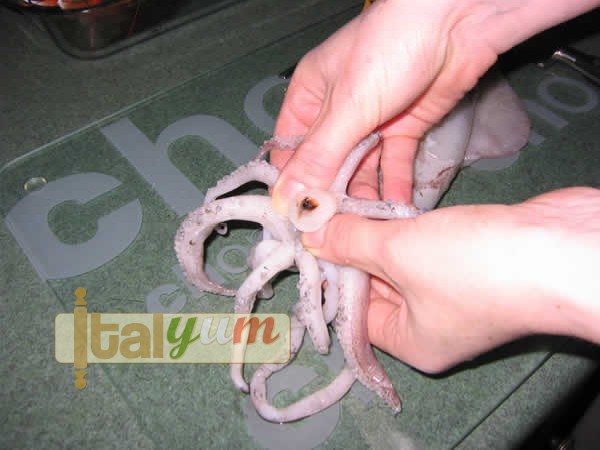
Start squeezing the squid beak out.

Take the beak off and discard it.
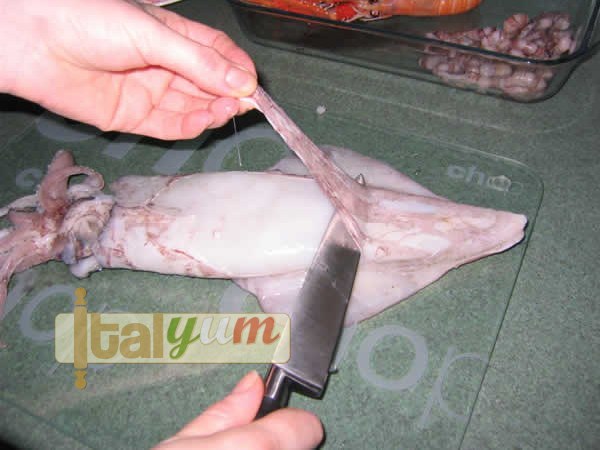
Remove the skin and discard it.
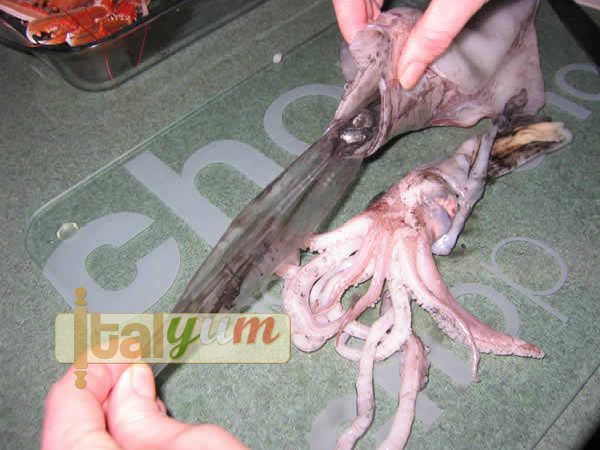
Extract the quill from the body and discard it.
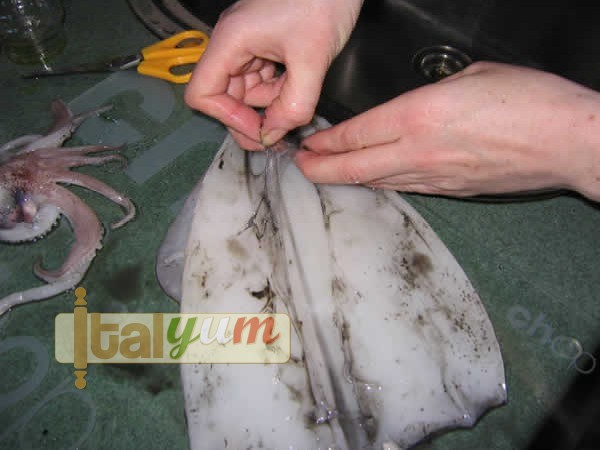
If the squid is big, I suggest cutting the body longways and discard all the content. Then, pull the thin transparent skin out and discard it.
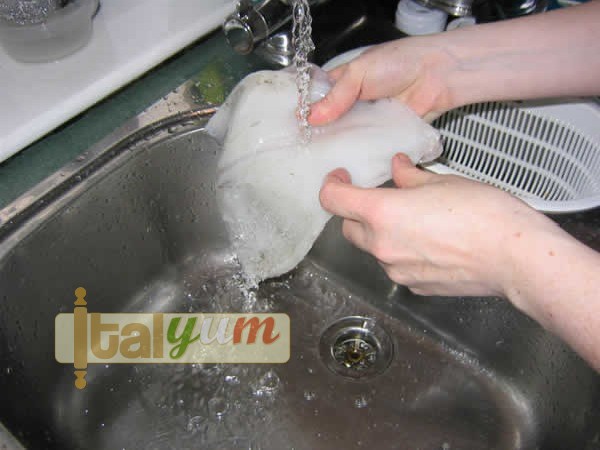
Rinse thoroughly under fresh water.
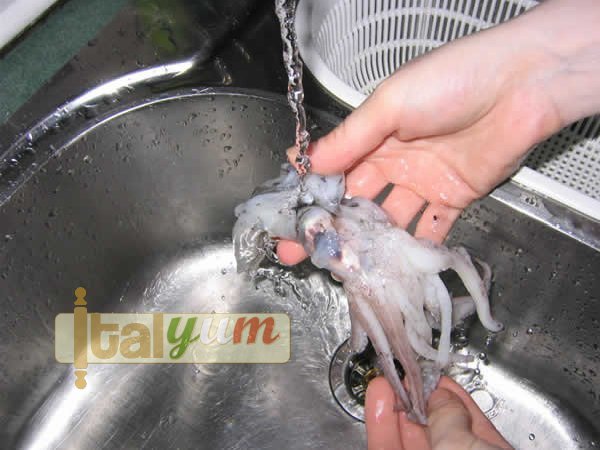
Rinse the squid head under fresh water.
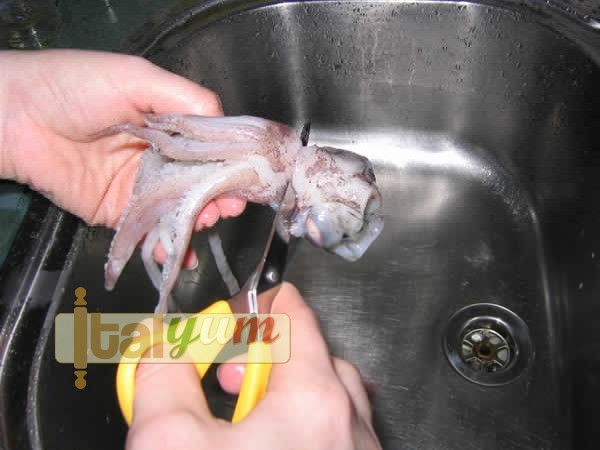
Cut the squid head, just under the eyes. Keep the tentacles and discard the part with the eyes.
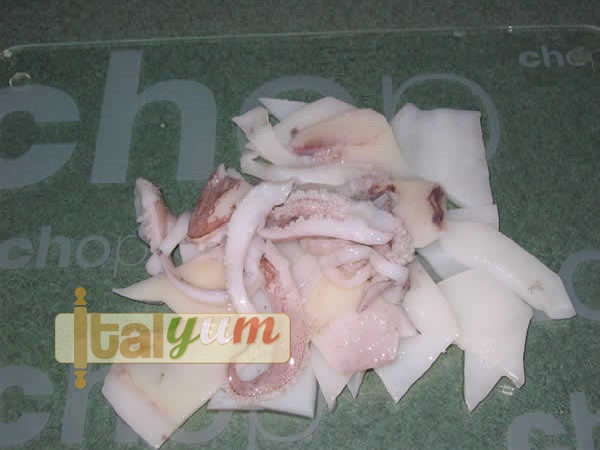
Finally, cut the squid body into pieces, about 3-4 cm (1 1/4″ – 1 3/4″) wide, and, if the squid is big, separate the tentacles (with small squids I keep the tentacles together so that they look like baby octopus). Set the squid aside for the initial stage of the fish stew.
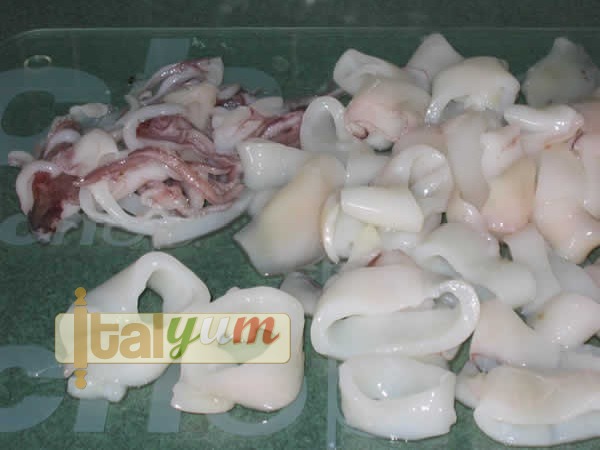
If the squid is small, I usually do not cut the body longways; I just rinse the inside of the body with a small jet of water so that it becomes completely clean. Then, I cut the body making rings.
CLAMS
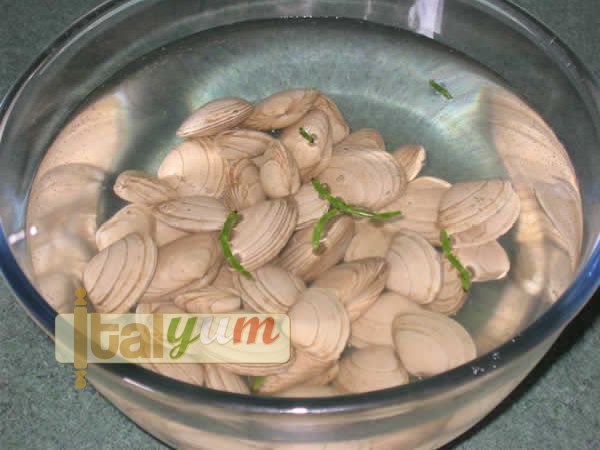
Put the clams into a large bowl and fill it with fresh water and add some salt. Recreating this micro environment, they will open and start to eject the dirt and sands they have inside. It’s important to do this because a little grain of sand can really damage your teeth. Another good tip to get them opened is the “silence”, so do not be noisy and do not toss the water. Leave them alone for a while; some say 1/2 an hour is enough and some say 4-5 hours, but personally I have found that after a couple of hours they can be ready for the next stage.
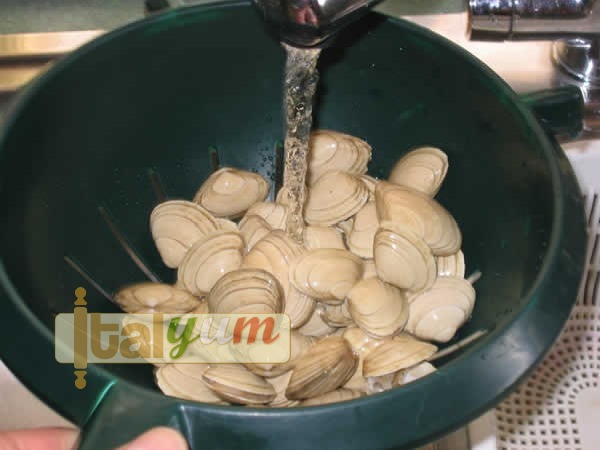
After a couple of hours of salty water immersion, give them a good rinse under fresh running water.
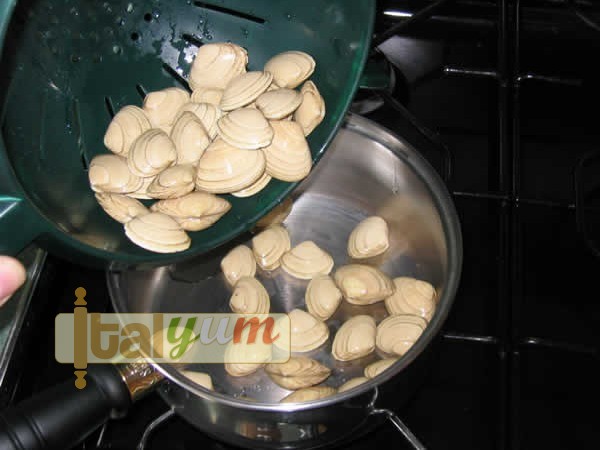
Then, put them into a pan.
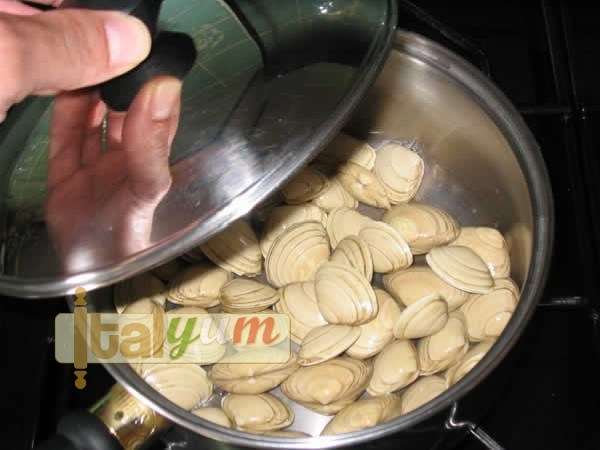
Close the pan with a lid and let the heat (medium/high) to open them all. Just cook them until they are open, no more no less, and discard those that do not open at all. At this stage you can also drizzle with few drops of olive oil.
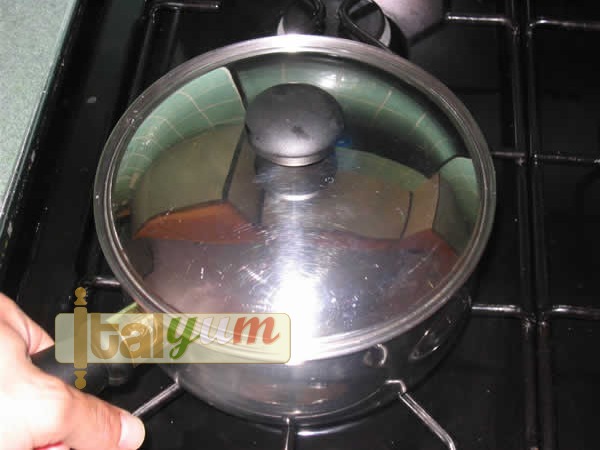
With the pan closed, hold the lid down and shake the pan so that all the clams receive the same amount of heat; otherwise the ones that remain in the top may not open because they have not received enough heat.
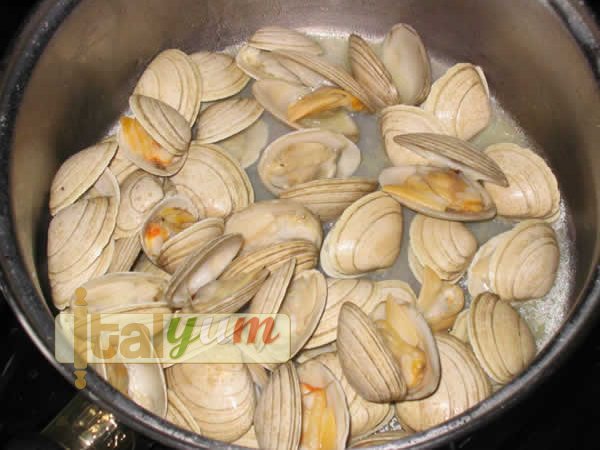
When the clams open, they will release the liquid they have inside.
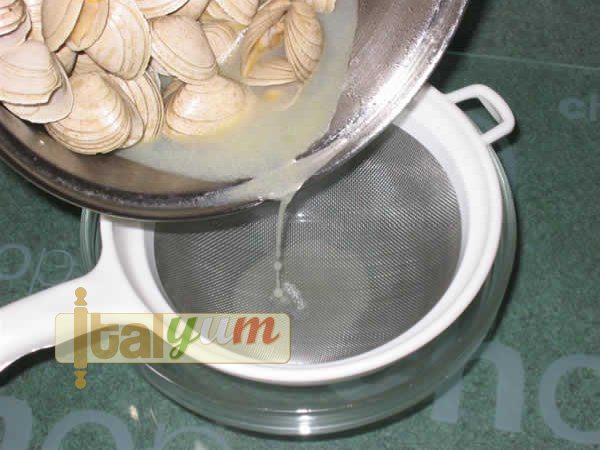
Filter the liquid into a small bowl.
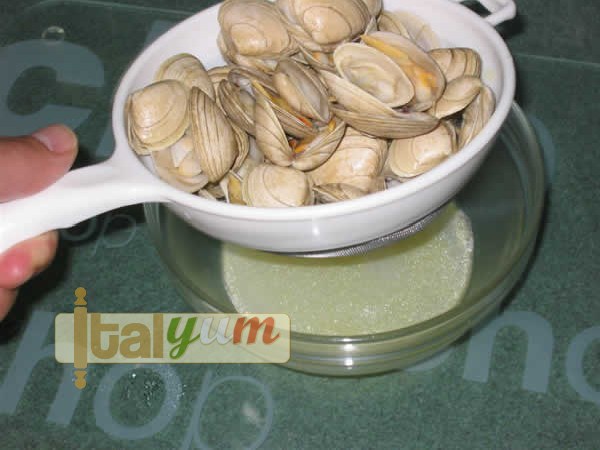
Then, add this liquid to the pan containing the light stock.
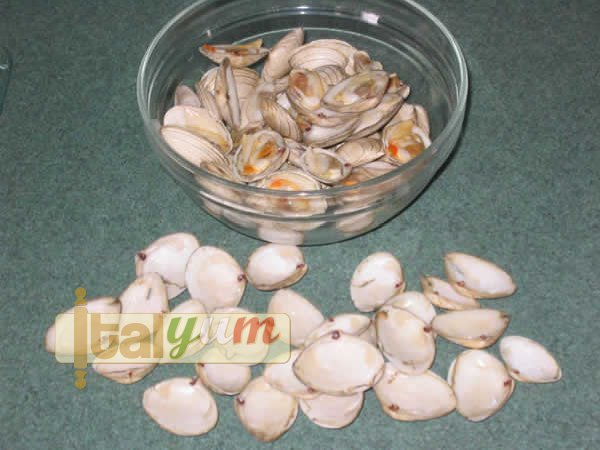
Finally, remove some of the half shells and discard them, leaving the clam content in the other half. Put the clams back into the small bowl and set aside for the later stage of the fish stew.
MUSSELS (as alternative to the clams)
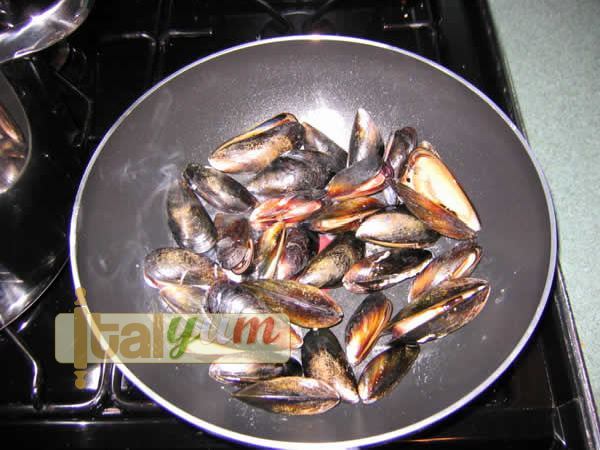
In Italy, when buying mussels, we always check that the are closed. If they are open, or slightly open, it is not a good sign because it means that they are not fresh or that they may be dead, with the result of making you very sick; so be sure you are buying very fresh mussels. To clean them, scrub the mussels under running water with a brush and remove any barnacles. Pull off the beards and remember to discard any that have a cracked shell. Put the mussels into the pan and cook them only until they just open because of the heat (normally a couple of minutes at high heat). Any that remain closed should be discarded. When opened, put them in a bowl and set them aside if their desitny is to end up in a fish fish stew or, if you are preparing a gratin, remove some of the half shells, leaving the mussels content in the other half.
LANGOUSTINES

Separate the heads from the tails, then rinse every part under fresh running water, especially at the point where you separated the head from the tail, so that you will get rid of the usual greenish stuff! Then, set heads and tails aside for the later stage of the fish stew.
WHOLE FISH
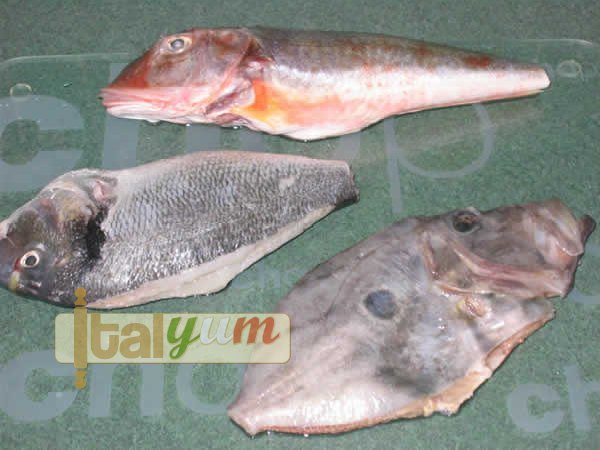
Remove all the scales (if any – red gurnard and John dory do not have scales) scraping with a knife. Then, gut the fish and rinse thoroughly under fresh water. Cut off and discard all the fins. Set the fish aside for the intermediate stage of the fish stew.
FISH FILLET
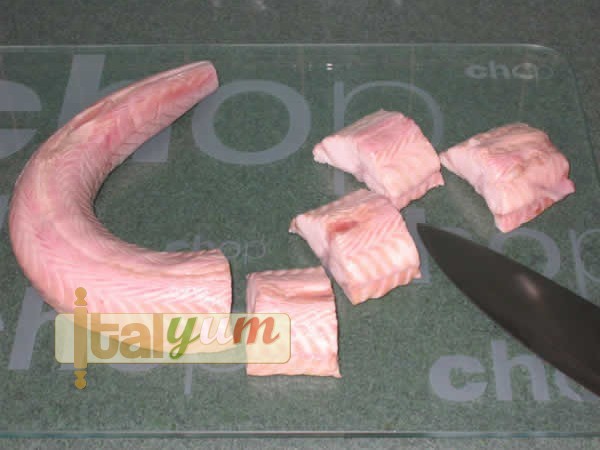
Take your fillet and…

…cut them into pieces about 5 cm (2″) long and set them aside for the intermediate stage of the fish stew.
